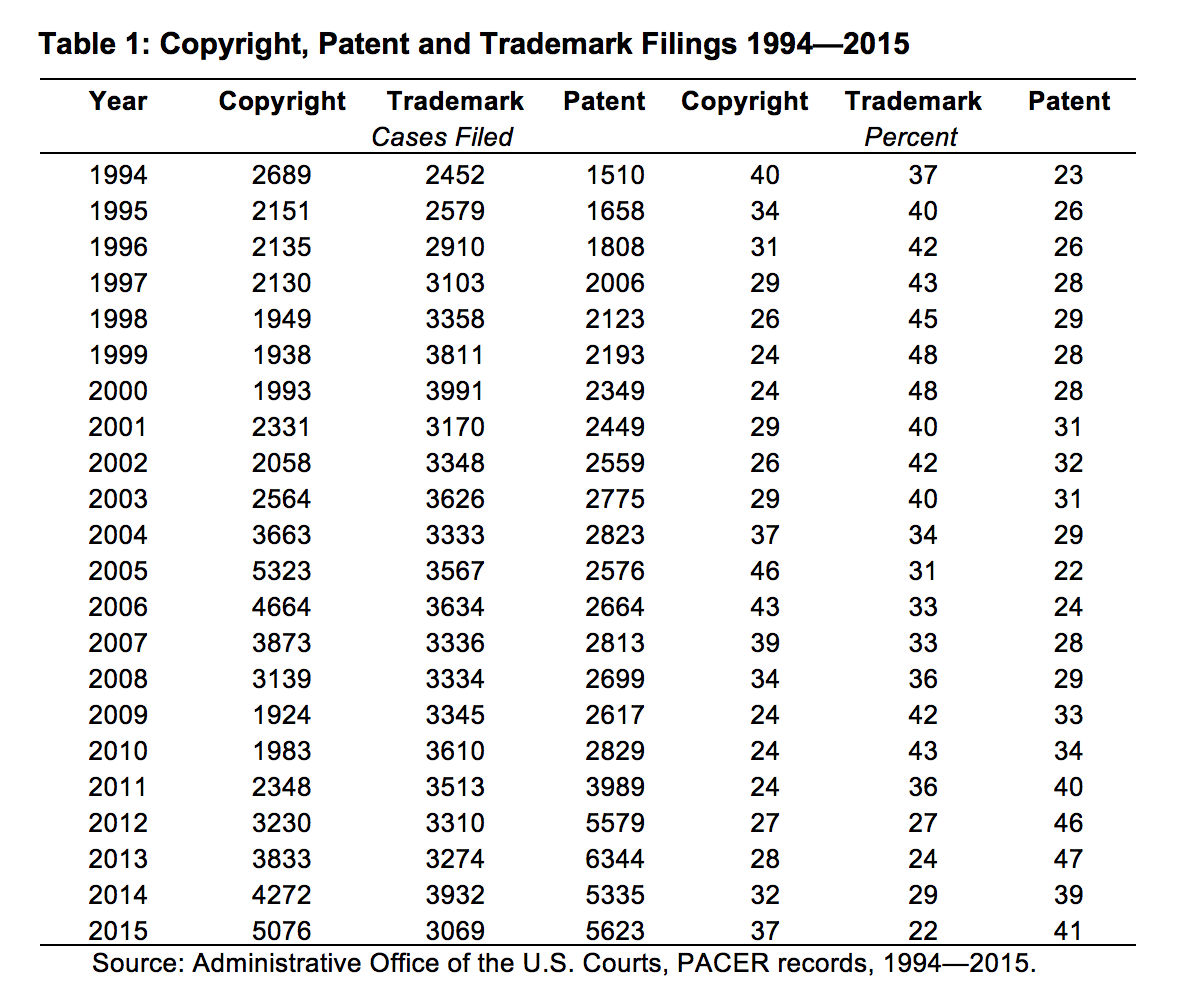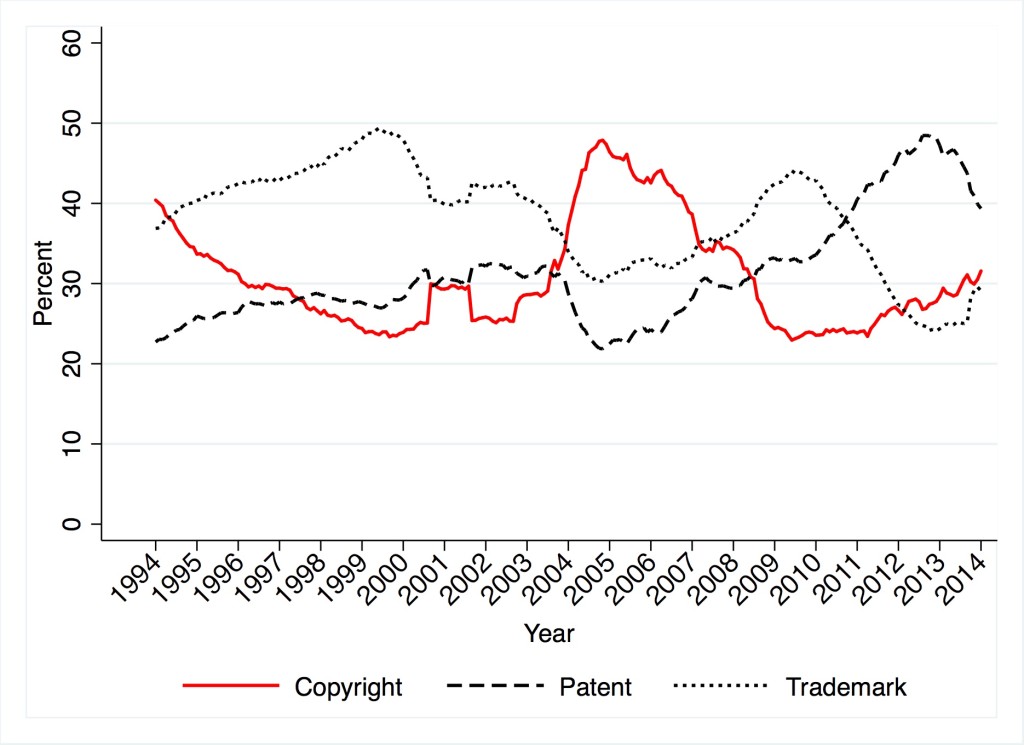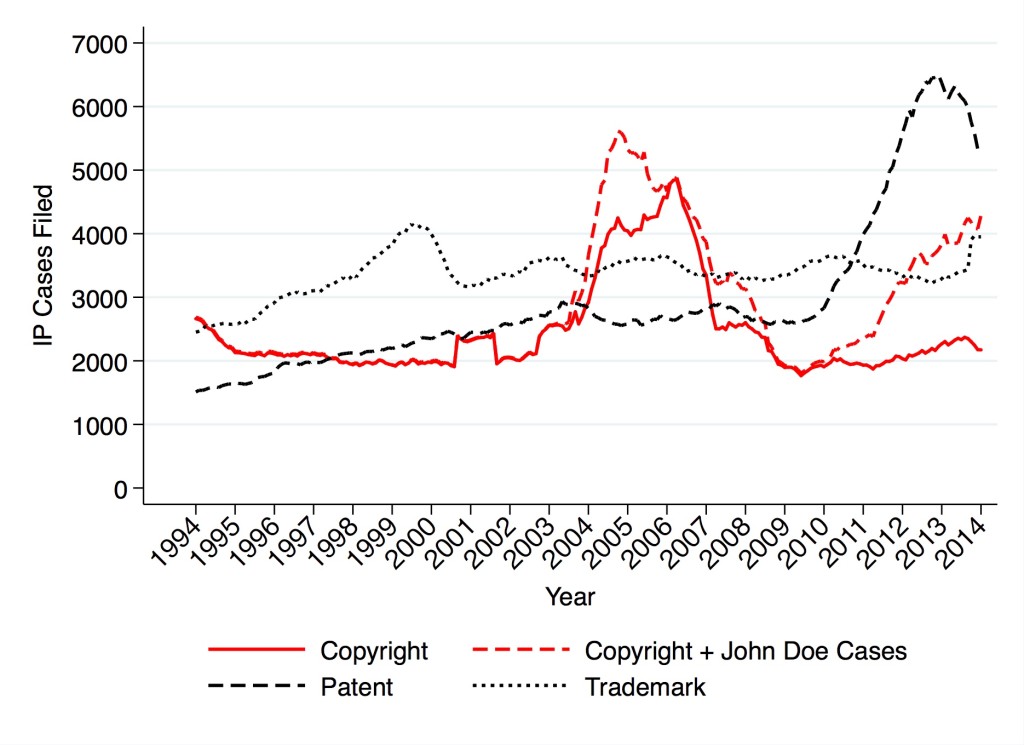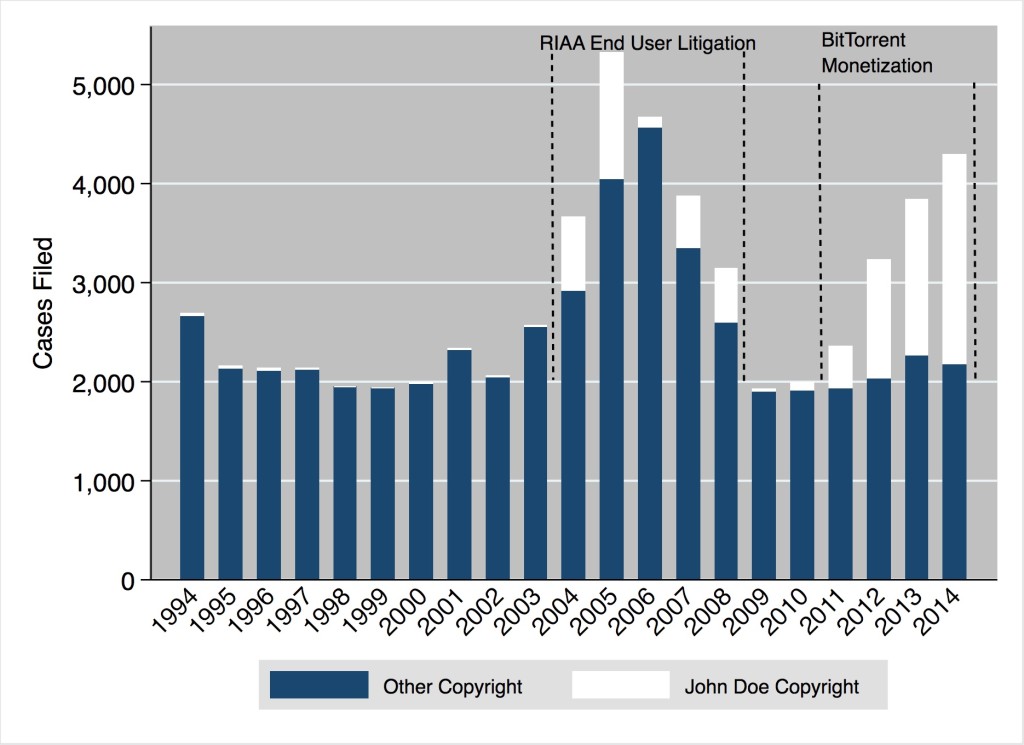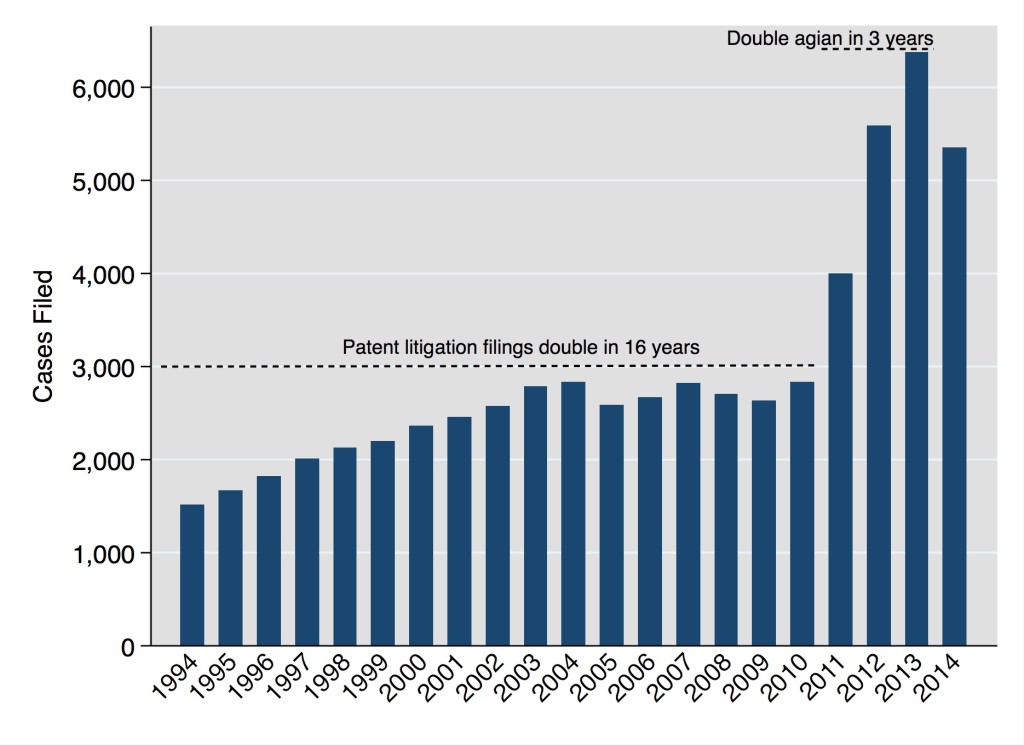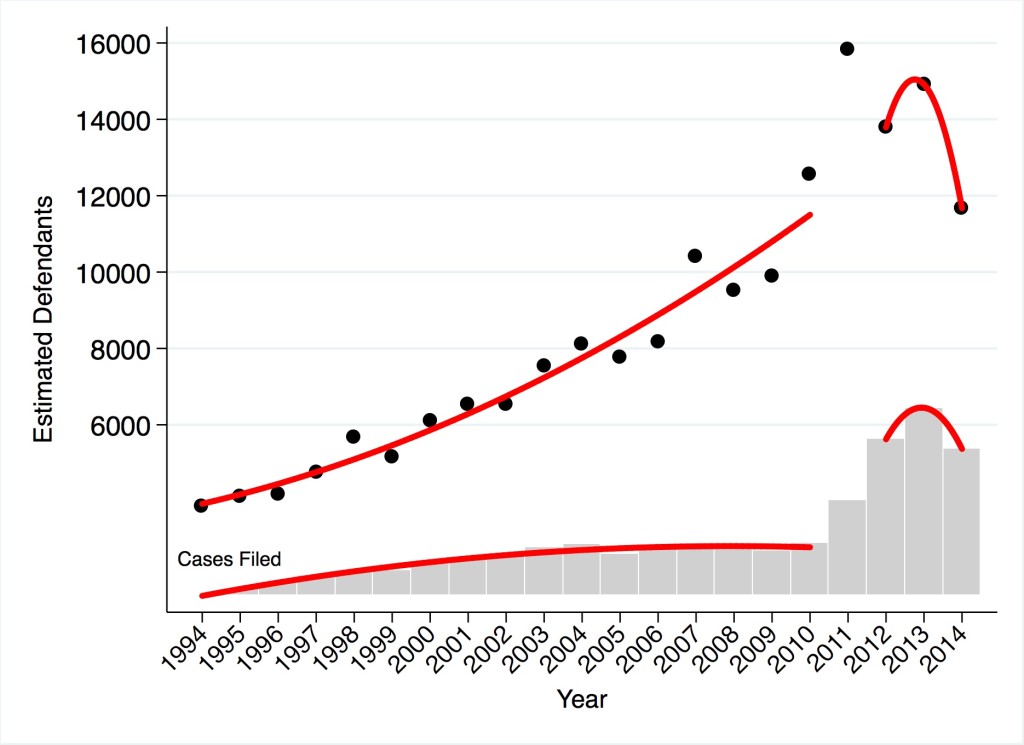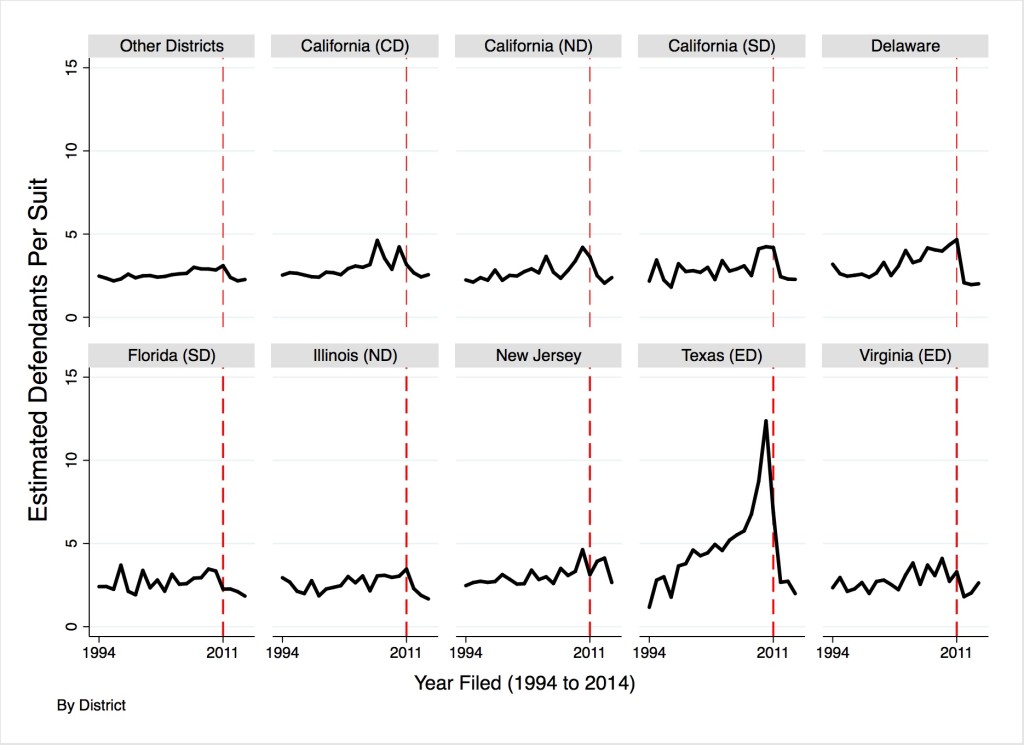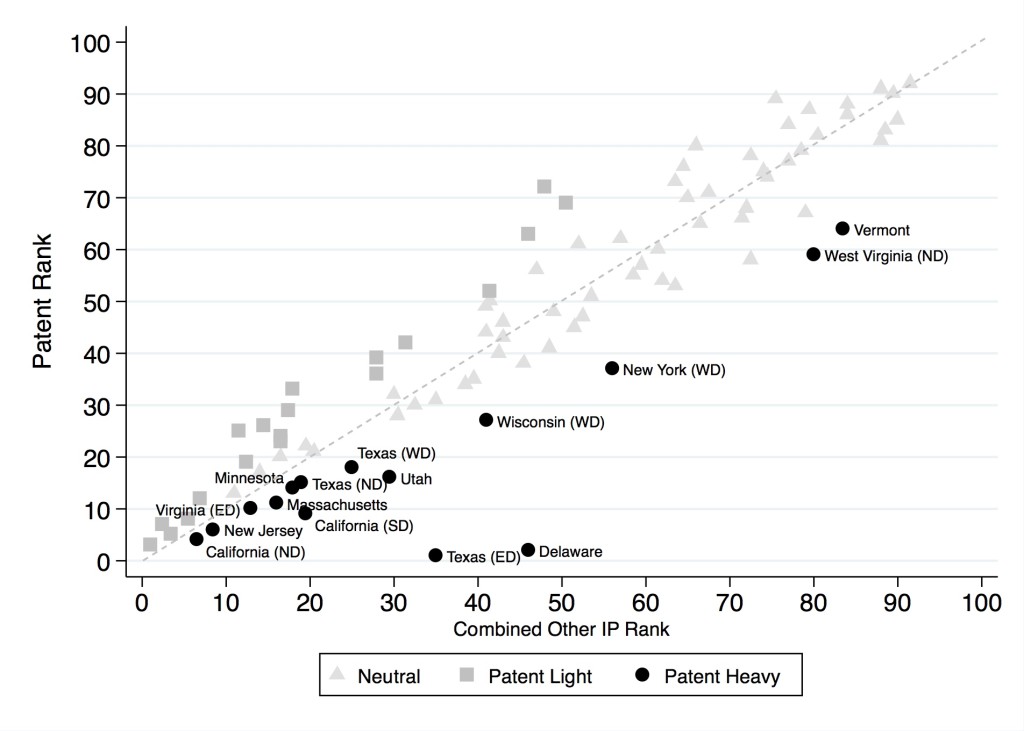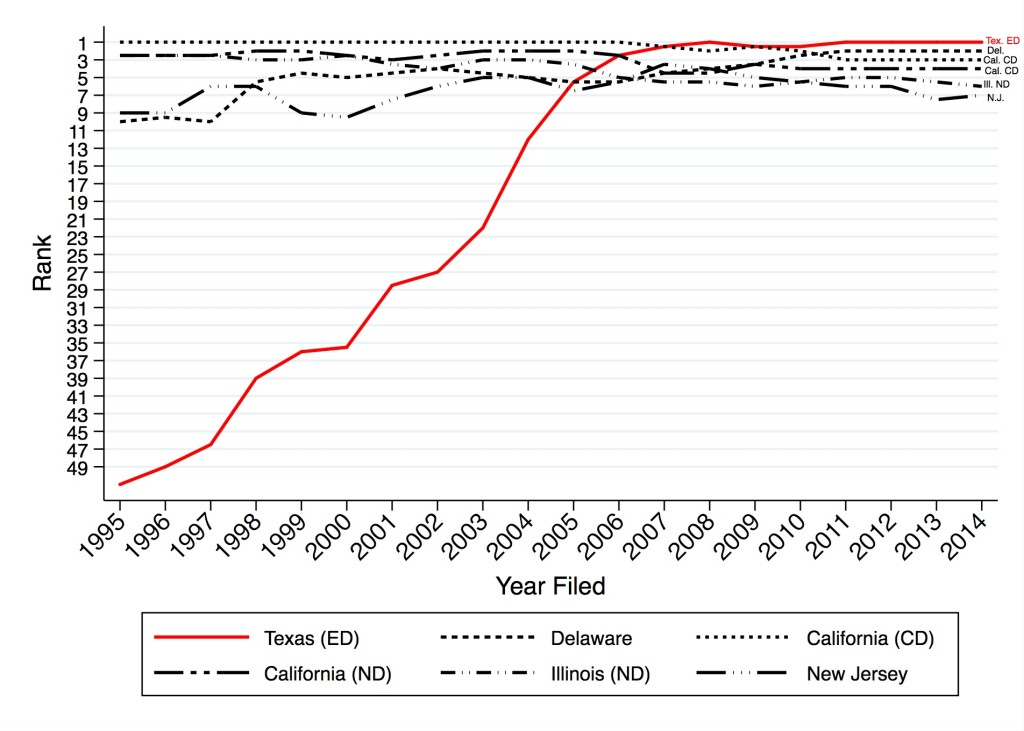Fair use, Transformative Use and Non-Expressive Use
Or,
Campbell v. Acuff-Rose and the Future of Digital Technologies, notes on a short presentation at the Fair Use In The Digital Age: The Ongoing Influence of Campbell v. Acuff-Rose’s “Transformative Use Test” Conference, April 17 & 18, 2015, University of Washington School of Law.
Copyright and disintermediation technologies
Copyright policy was hit by an analog wave of disintermediation technology in the post-war era and a digital wave of disintermediation technologies beginning in the 1990s. These successive waves of technology have forced us to reevaluate the foundational assumption of copyright law; that assumption being that any reproduction of the work should be seen as an exchange of value passing from the author (or copyright owner) to the consumer.
Technologies such as the photocopier and the videocassette recorder and then later the personal computer significantly destabilized copyright policy because these inventions, for the first time, placed commercially significant copying technology directly in the hands of large numbers of consumers. This challenge has only been accelerated by digitalization and the Internet. Digitalization allows for perfect reproduction such that the millionth copy of an MP3 file sounds just as good as the first copy.
The implications of the copying that these devices enabled were not clear-cut. In some cases, the new copying technology simply enabled greater flexibility in consumption, in others they generated new copies to be released into the stream of commerce as competitors with the author’s original authorized versions. The Internet has connected billions of people together leading to an outpouring of creativity and user-generativity, but from the perspective of the entertainment industry is also brought people together to undertake a massive scale piracy.
The significant of Campbell v. Acuff-Rose Music, Inc., 510 U.S. 569 (1994)
The Supreme Court in Sony v. Universal[1] had already shown that it was willing to apply fair use in a flexible manner in situations where the use was personal and immaterial to the copyright owner. The significance of the Court’s decision in Campbell[2] was that, by reorienting the fair use doctrine around the concept of transformative use, the Court prepared the way for a flexible consideration of technical acts of reproduction that do not have the usual copyright significance.
Internet search engines, plagiarism detection software, text mining software and other copy-reliant technologies do not read, understand, or enjoy copyrighted works, nor do they deliver these works directly to the public. They do, however, necessarily copy them in order to process them as grist for the mill, raw materials that feed various algorithms and indices. Campbell arrived just in time to provide a legal framework far more hospitable to copy-reliant technology than had previously existed. Even in its broadest sense, transformative use is not the be all and end all of fair use. At the risk of over-simplification, Sony v. Universal safeguarded the future of the mp3 player, whereas Campbell secured the future of the Internet and reading machines.
Copy-reliant technology and non-expressive use
Some of the most important recent technological fair use cases can be summarized as follows: Copying that occurs as an intermediate technical step in the production of a non-infringing end product is a ‘non-expressive’ use and thus ordinarily constitutes fair use.[3] The main examples of non-expressive use I have in mind are the construction of search engine indices,[4] the operation of plagiarism detection software[5] and, most recently, library digitization to make paper books text-searchable.[6]
To have a coherent concept of fair use, or any particular category of fair use, one needs a coherent concept of copyright. As expressed in the U.S. Constitution, copyright’s motivating purpose is “to promote the Progress of Science and useful Arts.”[7] Ever since the Statute of Anne in 1710, the purpose of Copyright law has been to encourage the creativity of authors and to promote the creation and dissemination of works of authorship. Copyright is not a guarantee of total control; in general, the copyright owner’s rights are limited and defined in reference to the communication of the expressive aspects of the work to the public. This is evident in the idea-expression distinction, the way courts determine whether two works are substantial similar and the focus of fair use cases on expressive substitution. Thus, subsequent authors may not compete with the copyright owner by offering her original expression to the public as a substitute for the copyright owner’s work, but they are free to compete with their own expression of the same facts, concepts and ideas. They are also free to expose, criticize and even vilify the original work. Genuine parodies, critiques and illustrative uses are fair use so long as the copying they partake in is reasonable in light of those purposes.
If public communication and expressive substitution are rightly understood as copyright’s basic organizing principles, then it follows that non-expressive uses — i.e., uses that involve copying, but don’t communicate the expressive aspects of the work to be read or otherwise enjoyed — must be fair use. In fact, they are arguably the purest essence of fair use. Groking the concept of non-expressive use simply involves taking the well understood distinction between expressive and nonexpressive works and making the same distinction in relation to potential acts of infringement.
The legal status of actual copying for nonexpressive uses was not a burning issue before digital technology. Outside the context of reading machines like search engines, plagiarism software and the like, courts have quite reasonably presumed that every copy of an expressive work is for an expressive purpose. But this assumption no longer holds. At a minimum, preserving the functional force of the idea-expression distinction in the digital context requires that copying for purely non-expressive purposes, such as the automated extraction of data, should not be infringing.
Some limits to the non-expressive use framework
Non-expressive use is a sufficient but not necessary condition of fair use. For example, parody is an expressive use, but it is fair use because it does not tend to threaten expressive substation. Even within the realm of recent technology cases, non-expressive use is not the right framework for addressing important man-machine interaction questions such as disability access, also a key issue in the HathiTrust litigation, but it does tie together a number of disparate threads.
The cases which hold that software reverse engineering is fair use are grounded firmly in the idea-expression distinction,[8] but they are not exactly non-expressive use cases for the reasons that follow.[9] The non-expressive use framework is also not the right tool in cases where software is copied in order to access its functionality: after-all, software is primarily functional and its primary (perhaps exclusive) value comes from the function it performs. Software piracy can’t be justified as a non-expressive use, because to do so would defeat the statutory scheme wherein Congress chose to graft computer software protection onto copyright. However, the reverse engineering cases still follow the logic of non-expressive use. In those cases copying to access certain API’s and other unprotectable elements enabled the copyists to either independently recreate that functionality (akin to conveying the same ideas with different expression) or to develop programs or machines that would complement the original software.
Non-expressive use versus transformative use?
The main issue left to resolve in terms of the copy-reliant technology and non-expressive use seems to be one of nomenclature. Is non-expressive use simply a subset of transformative use? Or is it a separate species of fair use with similar implications to that of transformative use.
Non-expressive use, as I have defined and elucidated in a series of law review articles and amicus briefs, is a clear coherent concept that ties a broad set of fair use cases directly to one of copyright’s core principles, the idea-expression distinction. Transformative use, as explained by Pierre Leval and adopted by the Supreme Court is rooted in the constitutional imperative for copyright protection – the creation of new works and the promotion of progress in culture, learning, science and knowledge. But for all that, if transformative use is invoked as an umbrella term, it is often hard to see what holds the category together.
The Campbell Court did not posit transformative use as a unified, exhaustive theory, but it did say that “[a]lthough such transformative use is not absolutely necessary for a finding of fair use, the goal of copyright, to promote science and the arts, is generally furthered by the creation of transformative works. Such works thus lie at the heart of the fair use doctrine’s guarantee of breathing space within the confines of copyright, …”[10] No doubt, when the Supreme Court spoke of transformative use, it had various communicative and expressive uses, such as parody, the right of reply, public comment and criticism in mind. But since Campbell, lower courts have applied the same purposive interpretation of copyright to a broader set of challenges. Campbell was decided in a different technological context and it is true that many of today’s technological fair use issues were entirely unimaginable before the birth of the World Wide Web and our modern era of big data, cloud computing, social media, mobile connectivity and the “Internet of Things”.
Non-expressive use is a useful concept because it provides a way for courts to recognize the legitimacy of copying that is inconsequential in terms of expressive substitution, but does not necessarily lead to the creation of the type of new expression that the Supreme Court had in mind in Campbell. The use of reading machines in digital humanities research is easy to justify, both in terms of the lack of expressive substitution and in the obvious production of meaning, new insights and potentially new and utterly transformative works of authorship. But what of less generative non-expressive uses? For example, in the future a robot might ‘read’ a copyrighted poster on a subway wall advertising a rock concert in Central Park. The robot might then ‘decide’ to change its travel plans in light of the predictable disruption. The acts of ‘reading’ and ‘deciding’ are both simply computational. Even if reading involves making a copy of the work inside the brain of a machine, it seems nonsensical to conclude that the robot was used to infringe copyright. In the age of the printing press, copying a work had clear and obvious implications. Copying was invariably for expressive ends and it was almost always the point of exchange of value between author and reader. The copyright implications of copying are much more contingent in the digital age.
There is much clarity to be gained by talking directly in terms of non-expressive use rather than relying on transformative as broad umbrella for a range of expressive and non-expressive fair uses. Such clear thinking would hopefully ease the anxieties of the entertainment industry that still fears that fair use is simply a stalking horse for dismantling copyright. Nonetheless, it would not be surprising if courts were more comfortable sticking with the language of transformativeness that Judge Pierre Leval gave us in “Toward a Fair Use Standard“,[11] and the Supreme Court adopted in Campbell.
This is a sketch of some ideas, no doubt revisions will follow after this exciting conference.
Related Publications:
Matthew Sag, Copyright and Copy-Reliant Technology 103 Northwestern University Law Review 1607–1682 (2009)
Matthew Sag, Orphan Works as Grist for the Data Mill, 27 Berkeley Technology Law Journal 1503–1550 (2012)
Matthew Jockers, Matthew Sag & Jason Schultz, Digital Archives: Don’t Let Copyright Block Data Mining, 490 Nature 29-30 (October 4, 2012)
Somewhat Related Publications:
Peter DiCola & Matthew Sag, An Information-Gathering Approach to Copyright Policy, 34 Cardozo Law Review 173–247 (2012)
Matthew Sag, Predicting Fair Use 73 Ohio State Law Journal 47–91 (2012)
Matthew Sag, The Pre-History of Fair Use 76 Brooklyn Law Review 1371–1412 (2011)
[1] Sony Corp. of America v. Universal City Studios, Inc., 464 U.S. 417 (1984).
[2] Campbell v. Acuff-Rose Music, Inc., 510 U.S. 569 (1994).
[3] See generally, Matthew Sag, Copyright and Copy-Reliant Technology 103 Northwestern University Law Review 1607–1682 (2009)
[4] There is no case addressing the legality of the process of making a text-based search index (as opposed to caching or display of search results), but the proposition naturally flows from Kelly v. Arriba Soft Corp., 336 F.3d 811 (9th Cir. 2003) and Perfect 10, Inc. v. Amazon.com, Inc., 508 F.3d 1146 (9th Cir. 2007) and is a necessary implication of Authors Guild, Inc. v. Hathitrust, Court of Appeals, 2nd Circuit 2014 and Authors Guild, Inc. v. Google Inc., 954 F. Supp. 2d 282 (S.D.N.Y. 2013)
[5] A.V. ex rel. Vanderhye v. iParadigms, LLC, 562 F.3d 630 (4th Cir. 2009).
[6] Authors Guild, Inc. v. Hathitrust, Court of Appeals, 2nd Circuit 2014; Authors Guild, Inc. v. Google Inc., 954 F. Supp. 2d 282 (S.D.N.Y. 2013). See also Matthew Sag, Orphan Works as Grist for the Data Mill, 27 Berkeley Technology Law Journal 1503–1550 (2012); Matthew Jockers, Matthew Sag & Jason Schultz, Digital Archives: Don’t Let Copyright Block Data Mining, 490 Nature 29-30 (October 4, 2012).
[7] U.S. Const. art. I, § 8, cl. 8.
[8] Sega Enter. Ltd. v. Accolade, Inc., 977 F.2d 1510 (9th Cir. 1992); Sony Computer Entm’t, Inc. v. Connectix Corp., 203 F.3d 596, 606 (9th Cir. 2000).
[9] These reasons are more fully elaborated in Matthew Sag, Copyright and Copy-Reliant Technology 103 Northwestern University Law Review 1607–1682 (2009).
[10] Campbell v. Acuff-Rose Music, Inc., 510 U.S. 569, 579 (1994)(citation omitted).
[11] 103 Harv. L. Rev. 1105 (1990)


